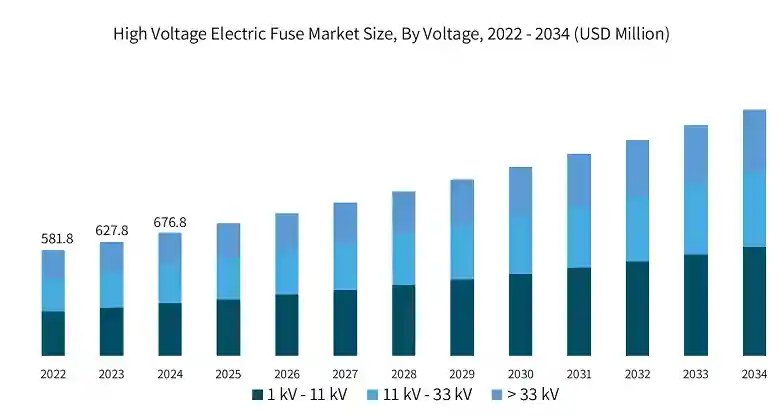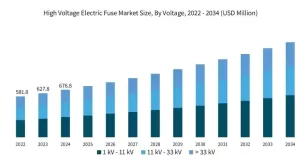Fuses are indispensable components in electrical protection systems, and among them, HRC (High Rupturing Capacity) fuses and HV (High Voltage) fuses are commonly used across various applications. While the terms are sometimes used interchangeably, they refer to distinct technologies with specific roles in modern electrical networks. This article explores the key differences between HRC and HV fuses, clarifying their designs, uses, and relevance in industrial and utility-scale power systems.

Core Definitions
What Is an HRC Fuse?
An HRC (High Rupturing Capacity) fuse is a type of fuse capable of safely interrupting large short-circuit currents without exploding or damaging adjacent equipment. It’s typically used in low to medium voltage environments and is designed to clear fault conditions with high reliability.
What Is an HV Fuse?
An HV (High Voltage) fuse is any fuse designed to operate in circuits above 1,000 volts. HV fuses include several subtypes (such as expulsion and current-limiting fuses) and are essential in power transmission and distribution networks.
Application Areas
HRC Fuses
- Industrial motor control centers (MCCs)
- Power panels and switchboards (LV/MV)
- UPS and inverter circuits
- Distribution transformers (up to 11kV)
HV Fuses
- High-voltage substations (11kV–72.5kV)
- Ring main units (RMUs)
- Medium- and high-voltage power transformers
- Renewable energy switchgear (solar, wind)

Design and Construction
| Feature | HRC Fuse | HV Fuse |
|---|---|---|
| Voltage Range | Up to ~11kV (typically LV/MV) | Above 1kV, often up to 72.5kV |
| Body Material | Ceramic or glass with metallic caps | Porcelain, epoxy, or fiberglass |
| Arc Quenching | Quartz sand or air | Quartz sand, gas-expulsion, or vacuum |
| Physical Size | Compact | Longer, bulkier |
| Replacement | Fast and tool-less | Requires insulation tools and training |
Market Trends and Standards
According to reports by IEEMA and MarketsandMarkets, the global high-voltage fuse market is expected to grow alongside smart grid expansion and renewable integration.
- HRC fuses follow IEC 60269 and BS 88 standards
- HV fuses follow IEC 60282-1, IEEE C37.40, and ANSI C37.46 standards
Key manufacturers such as ABB, Schneider Electric, and SIBA continue to innovate both fuse types to meet stricter safety and efficiency demands.

Technical Considerations for Selection
- System voltage and breaking capacity: Match fuse class to maximum expected fault current
- Speed of operation: Use time-delay HRC fuses where surge tolerance is needed; current-limiting HV fuses for fast interruption
- Installation constraints: Choose based on panel space or substation layout
- Environment: Ensure outdoor HV fuses are weatherproof or enclosed
When to Use Which?
Choose HRC Fuses when:
- Voltage is below 11kV
- Space is limited (e.g., panelboards)
- Maintenance teams need fast, tool-free replacements
Choose HV Fuses when:
- Protecting critical substation components
- Coordinating with circuit breakers or relays
- Voltage is 12kV or higher
Frequently Asked Questions (FAQ)
A: Most HRC fuses are used in LV and MV systems, but some can operate up to 11kV. Beyond that, HV fuses are more suitable.
A: No. HV fuses are physically larger, require different mounting, and are meant for higher fault energy levels.
A: Yes. Both HRC and HV fuses are non-resettable devices designed for single-use protection.
Although HRC and HV fuses both provide critical overcurrent protection, they differ in design, application, and voltage class. HRC fuses are ideal for compact, fast-acting LV and MV protection, while HV fuses are essential for large-scale energy infrastructure. Selecting the right fuse not only improves protection but also ensures compliance with global electrical standards.
PINEELE provides both HRC and HV fuse solutions, backed by global certifications, technical expertise, and real-world performance.

